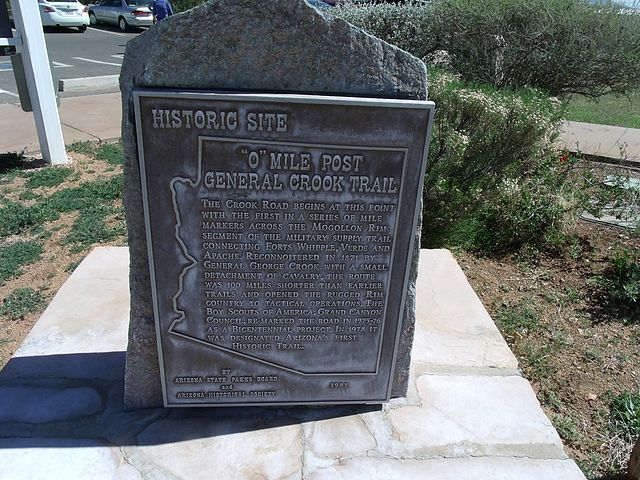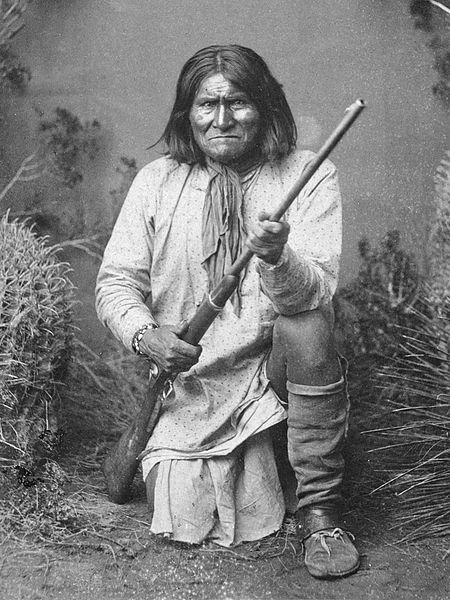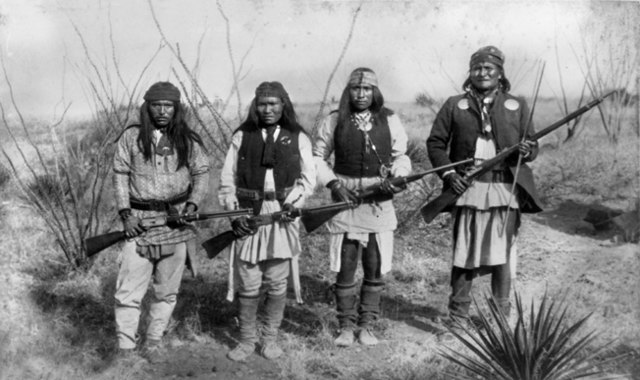George R. Crook was a career United States Army officer who served in the American Civil War and the Indian Wars. He is best known for commanding U.S. forces in the 1886 campaign that led to the defeat of the Apache leader Geronimo. As a result, the Apache nicknamed Crook Nantan Lupan, which means "Grey Wolf."
Portrait of George Crook
George Crook during the Tonto Basin Campaign.
General Crook Trail marker located where in 1871 Crook established a military supply road that connected Forts Whipple, Verde, and Apache. The marker is near the Fort Verde Administration Building in Camp Verde, Arizona.
Crazy Horse and his band of Oglala Lakota on their way from Camp Sheridan to surrender to General Crook at Red Cloud Agency near Camp Robinson, Nebraska, May 6, 1877.
Gerónimo was a military leader and medicine man from the Bedonkohe band of the Ndendahe Apache people. From 1850 to 1886, Geronimo joined with members of three other Central Apache bands – the Tchihende, the Tsokanende and the Nednhi – to carry out numerous raids, as well as fight against Mexican and U.S. military campaigns in the northern Mexico states of Chihuahua and Sonora and in the southwestern American territories of New Mexico and Arizona.
Photograph by Frank Rinehart, 1898
Geronimo (Goyaalé), a Bedonkohe Apache, kneeling with rifle, 1887
From right to left, Apache leader Geronimo, Yanozha (Geronimo's brother-in-law), Chappo (Geronimo's son by his second wife), and Fun (Yanozha's half brother) in 1886. Taken by C. S. Fly.
Photo by C. S. Fly of Geronimo and his warriors, taken before the surrender to Gen. Crook, March 27, 1886, in the Sierra Madre mountains of Mexico. Fly's photographs are the only known images of Indian combatants still in the field who had not yet surrendered to the United States.








